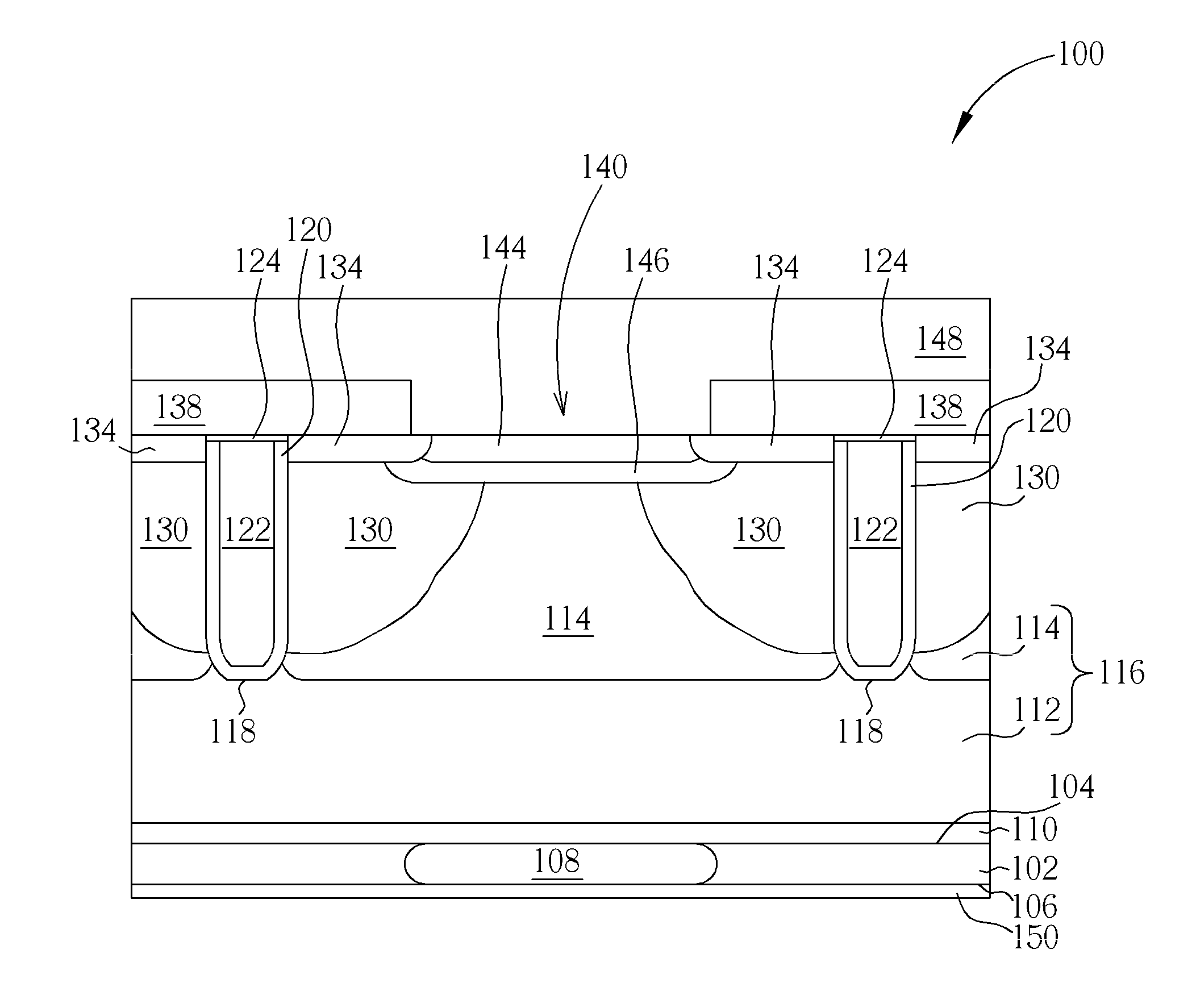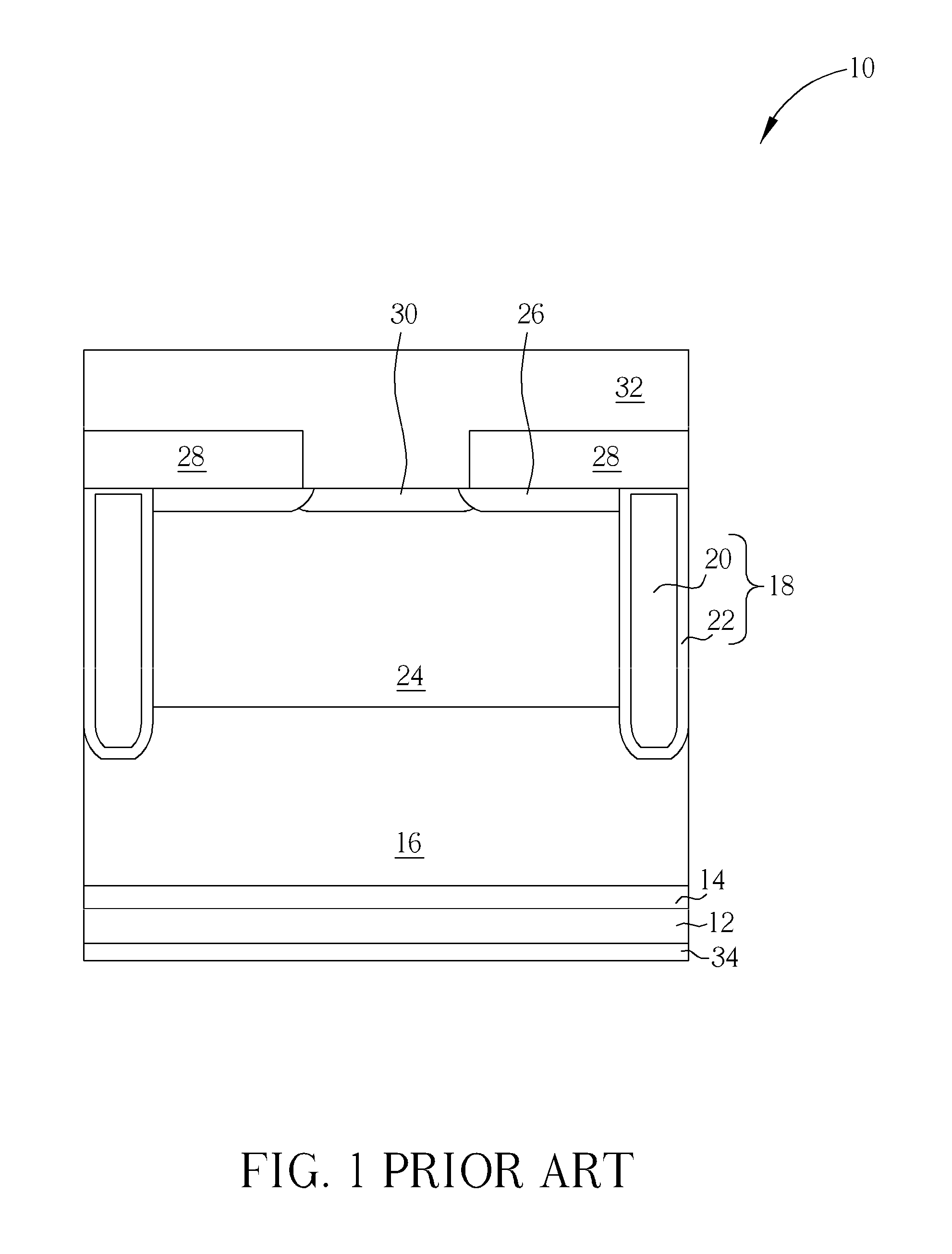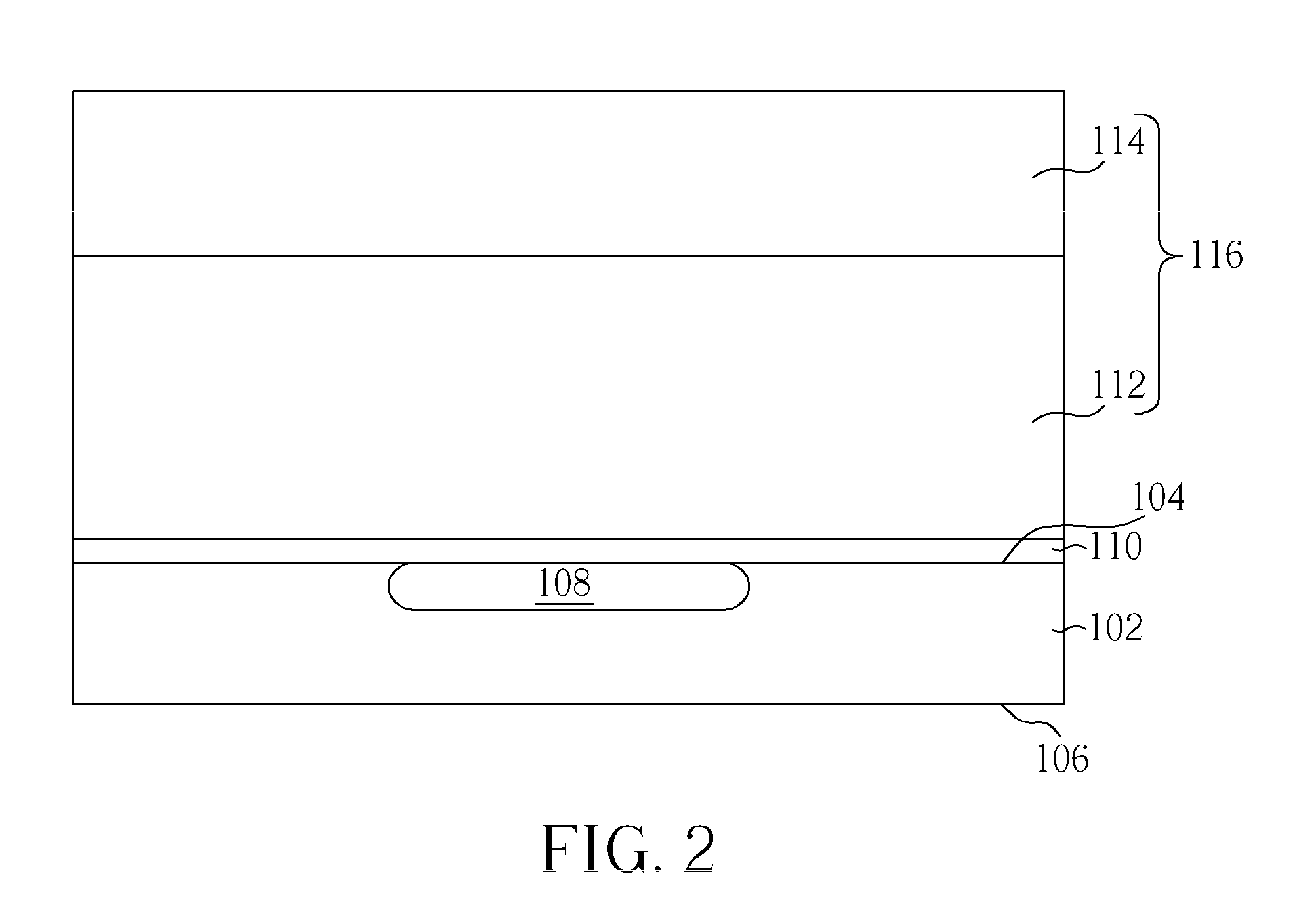IGBT with fast reverse recovery time rectifier and manufacturing method thereof
- Summary
- Abstract
- Description
- Claims
- Application Information
AI Technical Summary
Benefits of technology
Problems solved by technology
Method used
Image
Examples
Embodiment Construction
[0016]Please refer to FIGS. 2-7. FIGS. 2-7 are schematic diagrams illustrating a method of manufacturing an IGBT with a fast reverse recovery time rectifier according to a first embodiment of the present invention. As shown in FIG. 2, a semiconductor substrate 102 having a first conductivity type, such as a heavily doped P-type semiconductor substrate, is provided first, and the semiconductor substrate 102 includes an upper surface 104 and a lower surface 106. At least a doped cathode region 108 having a second conductivity type is doped in the semiconductor substrate 102, such as an N-type doped cathode region. In addition, a buffer layer 110 is disposed on the upper surface of the semiconductor substrate 102 of the present embodiment, and an epitaxial layer 112 is disposed on the buffer layer 110, wherein the buffer layer 110 and the epitaxial layer 112 have the second conductivity type, such as N-type. The first conductivity type of the present invention is not limited to P-type,...
PUM
 Login to View More
Login to View More Abstract
Description
Claims
Application Information
 Login to View More
Login to View More - R&D
- Intellectual Property
- Life Sciences
- Materials
- Tech Scout
- Unparalleled Data Quality
- Higher Quality Content
- 60% Fewer Hallucinations
Browse by: Latest US Patents, China's latest patents, Technical Efficacy Thesaurus, Application Domain, Technology Topic, Popular Technical Reports.
© 2025 PatSnap. All rights reserved.Legal|Privacy policy|Modern Slavery Act Transparency Statement|Sitemap|About US| Contact US: help@patsnap.com



